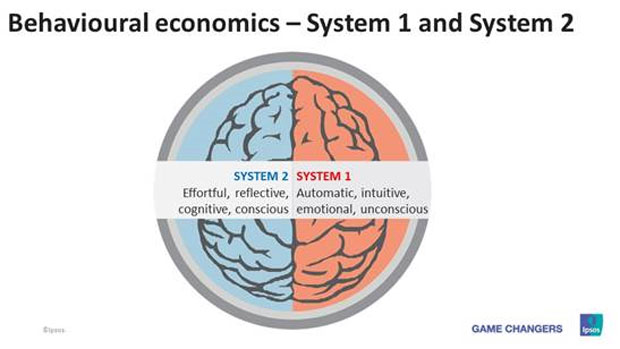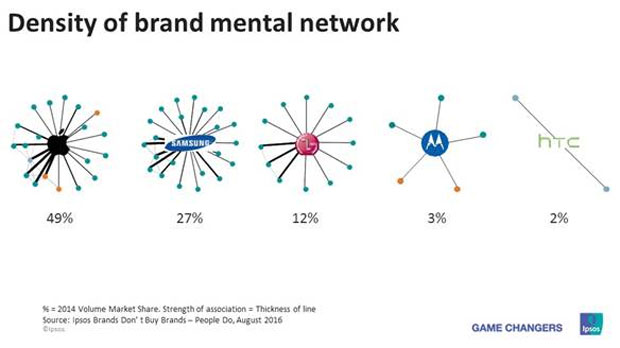
Subscribe & Follow
Advertise your job vacancies
Jobs
- Senior Brand Designer Cape Town
- Brand Specialist Johannesburg
- Brand Manager Midrand
- Experienced 3D Generalist/VFX Artist Johannesburg
- Multimedia Motion Designer Johannesburg
- Brand Promoter Nelspruit
- Brand Ambassador Paarl
- Brand Strategist - Agency Johannesburg
- Studio + Account Manager Cape Town
- Sales Consultant centurion
Brands don't buy brands, people do
Businesses want to know how they can grow their brands. This is a simple question with complex answers, answers that start with people in real life - how they choose brands and, most importantly, how you can influence them to choose your brand more. Brands exist in a constantly changing world and, at the same time, human behaviour is undergoing a revolution - which makes it challenging to manage a brand. In the end, in order for brands to grow they need to attract more people, more easily and more often. Yet, how can you ensure that more people will buy your brand more often and more easily?
It all starts with how people make choices
At the heart of growing brands is an understanding of how people make choices. In real life, decision-making is often more unconscious than conscious. People constantly use mental shortcuts to facilitate decision making. In essence, people use what behavioral economics refers to as System 1 and System 2 thinking (where System 1 thinking is more unconscious, more intuitive and faster and System 2 thinking is more conscious, controlled and slower).

This affects how people deal with brand choices. Brands don’t exist in people’s minds as such. They are a unique set of memories, feelings, emotions, thoughts, experiences, images, stories, sounds, colors, symbols, and the like – what we call a mental network. Mental networks connect to System 1 thinking.
This brings us to the areas we can influence when people choose brands, being memory salience and attention salience. Memory salience is the current mental network a brand has in a person’s mind as well as the mental availability of the brand. Attention salience is the ability of the brand to capture people’s attention at the moment of choice.
In simplest terms, we can think of memory salience as being thought of and attention salience as being noticed.
At the moment of brand choice, and at all points in the process, people are influenced by memory and attention salience. Yet, people will not process all incoming information when making choices. Underlying needs and motivations, as well as physical accessibility, will work as some sort of filter: some options will be rejected and other, salient brands will be considered. At that point the “best” option is chosen. This is a process everyone goes through, even if entirely unconscious.
Following choice, mental networks may be reinforced or challenged by current and future brand interactions.
Coming to mind is good. Coming to mind first is better.
Our brand framework is not only rooted in neuroscience and behavioral psychology and economics but also supported by consumer-driven R&D. Specifically, our R&D (which covered 1300 consumers) indicated that:
- The order in which a brand comes to mind for consideration matters.
- For a brand to grow, consumers need a dense and relevant mental network that is linked to key occasions – so a brand is considered at the moment of choice.
A brand needs to be noticed at the moment of truth
We asked mobile phone users which brands they considered choosing. Over half of consumers mentioned Samsung, and a little over 40% mentioned Apple. LG and other brands were mentioned to a lesser extent. So, Samsung had the highest share of mind overall. However, a closer looks reveals that Apple had the fastest speed of mental retrieval. Speed is based on the order of mentions. Apple is also more likely to be the only brand considered (i.e. “Apple only” is considered by 48% of consumers, while “Samsung only” is considered by 34% of consumers). Comparing first mentions with market share, we see that these are aligned very nicely.
Richer and positive networks lead to larger market shares
Our R&D also shows that brands with richer and more positive mental networks provide more mental cues at the moment of choice and, as a result, have larger market shares. However, the number of associations is not enough; a network also needs to have many interconnected associations. The more associations and the more these associations are connected, the denser the network will be. A dense network ensures easy retrieval of the brand. In our example, Apple has the strongest and most diverse network of associations – and the density of this network of associations is closely linked to market share.

We also see that positive or negative associations are also important. Negative associations can affect market share: negative associations dominate for Blackberry, resulting in lower market share. This analysis also forces us to ask the following question: do the elements of the network cover key occasions, needs and benefits? If yes, market share will be higher.
How will this help you to grow your brand?
There are three key takeaways for growing your brand based on these learnings:
- Make sure consumers have a strong and positive mental network.
- Embed in your network the needs and occasions that are key for the category.
- Strive to have your brand ranked first.
As simple as these takeaways seem, the question is: how do you activate them?
Brand managers need to identify what people expect from the category and their brand so they can ensure the brand experiences reinforce these prominent memory structures and their brand is implicitly retrieved in the moment of choice.
Once you have decided what is important to be included, reinforce these in a consistent manner.
Finally, build in cues or brand assets that make it easy for people to recognise you – so whenever consumers see your brand cues or assets, the brand comes to mind.
In summary, brands don’t buy brands – people do. So, understanding how your consumers make choices is the first step to achieving growth.
Please send enquiries to moc.sospi@aruawM.alaznaN.
Ipsos is an innovative, entrepreneurial, client-focused organisation, providing research services to clients on a global basis. We set ourselves high standards and aim to work collaboratively in partnership with our teams in order to service our clients most effectively.
- Unlocking the value of creativity in advertising: How to bridge the creativity gap15 Apr 13:47
- 4 habits keeping your brand poor26 Mar 16:08
- Understanding consumer mindsets for growth in 202407 Mar 08:52
- South Africa's unemployment nightmare: The burden on its people09 May 10:05
- Global survey shows shrinking trust in internet29 Nov 10:17












